Nothing spoils the look of a beautiful kitchen like a countertop cluttered with small appliances. Furthermore, nothing is more annoying than dragging the toaster out of a cabinet every morning for a crispy English muffin. Enter the great design debate of form versus function. Should you desire to have your cake and eat it too, (wow we’re really in the kitchen now), then building this DIY-friendly appliance garage is a must. With a cut list that can be sized to fit any space (we provide both our measurements and easy formulas to find your own!), and door slides that push back into the cabinet when not in use, you’re sure to enjoy your perfectly toasted muffin followed by a quick close of the doors to hide it all away.
Note: A door slide is a hinge that opens and then slides the door back along the inside of the cabinet wall. This type of hardware can be a bit pricy ($42 per set on Amazon). If that seems steep, we’ve created the DIY version explained in steps 13-20. Though the door doesn’t slide back quite as smoothly as with the fancy hardware, it’s a viable cost-saving option. Alternatively, you could skip the door slide altogether and opt for regular swinging doors using inexpensive full-inset hinges like this.
Cost: $70
Time: 4 ½ hours
Difficulty: Moderate. The layering of thin boards to create the paneled walls and doors is easy, but creating tight joints requires precision cuts.
(2) ¼-inch Plywood – Get two 2×4 foot project panels to complete the side and door panels and the inside walls and backing board.
(4) 1x2x8 Boards to frame the walls and make the crosspieces and stop block.
(5) ¼x3x4 Boards to trim the walls and doors.
(3) ½x2x4 Boards to frame to doors.
(1) 2×4 Board to support the inside walls.
(2) Cabinet Knobs
(4) Full Overlay Hinges
Wood Glue
Wood Filler
Sandpaper
Primer and Paint
Cabinet Dimensions: 30″ W x 18″ H x 12″ D
View our Cut List Worksheet and Board Planning Sheet
Walls
1×2 Wall Frame (stiles) – 4 @ 18 inches
1×2 Wall Frame (rails) – 4 @ 8 ¼ inches
¼ inch Plywood Wall Panel – 2 @ 11 ¼” W x 18″ H
¼ x 3 Wall Trim (stiles) – 4 @ 18 inches
¼ x 3 Wall Trim (rails) – 4 @ 6 ¼ inches
Doors
½ x 2 Door Frame (stiles) – 4 @ 16 3/8 inches
½ x 2 Door Frame (rails) – 4 @ 10 3/8 inches
¼ inch Plywood Door Panels – 2 @ 10 ¼” W x 13 ¼” H
¼ x 3 Door Trim (stiles) – 4 @ 16 3/8 inches
¼ x 3 Door Trim (rails) – 4 @ 8 3/8 inches
Inside Walls
2×4 Inside Walls Supports – 4 @ 10 ½ inches
¼ inch Plywood Inside Wall Panels – 2 @ 10 ½” W x 17 ¼” H
Miscellaneous
1×2 Crosspieces – 6 @ 27 ½ inches
1×2 Face Frame Legs – 2 @ 18 inches
1×2 Face Frame Top – 1 @ 27 inches
¼ inch Plywood Backing – 1 @ 27 ½” W x 17¼” H
1×2 Stop Block – 1 @ 4 inches
Steps
1. Prep the Parts
Measure your space, and then use our handy
Cut List Worksheet and
Board Planning Guide to determine the size of your boards. Using a miter saw, cut the parts to size. Drill two pocket holes in each end of the 1×2 crosspieces, the shorter ¼ x 2 frame pieces for the doors, and the shorter 1×2 frame pieces for the side walls using a Kreg Jig, as shown. Be sure to readjust the Kreg Jig between materials. Sand the parts to remove any burs from cutting.
 2. Assemble the Wall Frames
2. Assemble the Wall Frames
Apply wood glue to the ends of the shorter 1×2 wall frame pieces, and then lay them between the longer pieces. Use a clamp to hold each joint in place before driving 1 ¼ inch Kreg screws though the pilot holes to hold the parts in place. Repeat to create the second frame.

3. Attach the Wall Panels
Apply a bead of wood glue to the surface of each frame. Position the wall panel over the frame, covering the Kreg Jig holes. Using a pneumatic nail gun and 5/8 inch finish nails, secure the panel in place. Repeat to assemble the second wall frame and panel.

4. Attach the Wall Trim
Apply a bead of glue to the perimeter of the face of each panel, and then lay the ¼ x 3 wall trim pieces in place so that the shorter pieces set between the longer pieces. Adjust the pieces until they’re flush with the edges of each panel. Using a nail gun a 5/8 inch finish nails, nail through the trim pieces and into the perimeter of the panels so that the nails sink through the panel and into the 1×2 frame. Be careful to avoid the locations of the pocket hole screws.

5. Add Crosspieces to the Back
Stand the assembled walls upright, trim facing outward. Using 1 ¼ inch Kreg Screws, secure the four crosspieces between the side walls flush with their back edges. For reference, place a crosspieces flush with the top edge of each wall, one flush with the bottom edge of each walls, and the other two 2 ¾ from the top and bottom edges. (Note: Pardon the dark wood. I’m using salvaged boards for this part of the project.)

6. Add Crosspieces to the Top
Attach two additional crosspieces flush with the top edges of the walls; one flush with the front edge, and the other towards the back of the assembly about an inch from the back crosspiece.

7. Secure the Face Frame
Apply a bead of wood glue to the front edge of each wall. Position the outside edge of each leg of the face frame flush with the face of the side wall, and then secure it by shooting 1 ¼ inch finish nails through the leg and into the front edge of each wall. Apply wood glue to the front edge of the crosspiece, position the remaining piece of the face frame between the vertical legs, and nail it in place flush with the top edge of the legs. (Note: The photo shows the center piece attached first, but I found it would most likely be easier to attach the legs first.)

8. Assemble the Door Frames
The frames of the doors assemble much like the walls, except that the panels set inside the frame to hide the cut edge. To create the door frames, lay the shorter ½ x 2 pieces between the longer pieces and secure using wood glue, clamps and 1 inch Kreg Screws.

9. Position the Door Trim
Apply wood glue to the surface of each frame. Place the ¼ x 3 trim pieces on the frame so that the shorter pieces set between the longer pieces and flush with the edges of the frame, as shown.

10. Attach the Door Trim
Using a nail gun, shoot 5/8 inch nails through the ¼-inch-thick trim and into the ½-inch-thick frame.

11. Insert the Door Panels
Flip the assembled doors trim-side-down on the work surface. Apply a bead of wood glue to the exposed back of the trim pieces. Place the panels face down onto the ledge.

12. Attach the Hinge Support
Place the ¼ x 3 inch hinge support block on the back of each door panel. Position the board so that it is tight against the outside edge of each panel. Nail the board in place on each door using a nail gun a 5/8 inch finish nails.

13. Create the Slider Block
Mark the slider block 3 ¾ inches from each end. Place the panel side of each hinge flush with the edge of the block and inside the line as shown. Drill pilot holes and attach the hinges using the screws provided.

14. Attach the Hinges to the Door
Position each door flush with the bottom edge of its slider block. Using the instructions provided with the hinges, position an even gap between the door and the slider block. Drill pilot holes and attach the hinges to the doors using the provided screws.

15. Attach the L-brackets
Flip the doors hinge-side-down. On the face of each slider block, position an L-bracket ¾ inch from each end and flush with the outside edge. Using a drill driver and 5/8 inch wood screws attach each L-bracket. These brackets will slide along the inside edges of the wall frame to keep the door from tipping as it slides.

16. Dryfit the Doors
Tip the doors under the face frame and against the side walls. Position the sliders so that the L-brackets sit inside each of the wall’s 1×2 frame pieces. If the L-brackets don’t slide smoothly along the inset of the frame, reposition the brackets as needed. Remove the door until installation in step 19.

17. Build the Inside Walls
Position two 2×4 boards flush with the top and bottom edges of the ¼ inch inside wall panel. Using a nail gun and 1 ¼ inch finish nails, attach the panel to the 2x4s. Repeat to create the second inside wall.

18. Dryfit the Inside Walls
Tip the inside walls under the face frame and into place. With the panels facing outward, position the 2x4s 1 ¼ inch from each wall. Mark the placement on the crosspieces and remove the inside walls.

19. Secure the Doors and Inside Walls
Slide the doors back into place, and then position the inside walls. Using a drill driver and 1 ¼ inch screws (I just used the Kreg Screws from earlier), secure the inside walls by driving screws through the crosspieces and into 2x4s.

20. Attach the Stop Block
Mark the center of the stop block and the center of the face frame. Align the centerlines and clamp the block in place behind the face frame. Using a nail gun, secure the block by nailing through the face frame and into the block using 1 ¼ inch finish nails.

MORE BUILDING PLANS
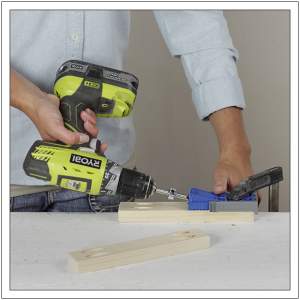
 2. Assemble the Wall Frames
2. Assemble the Wall Frames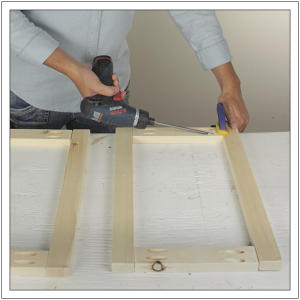
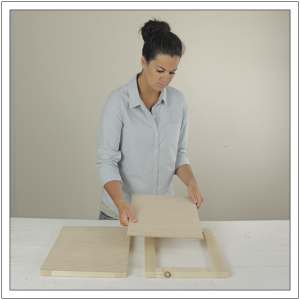
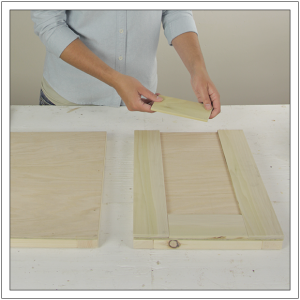
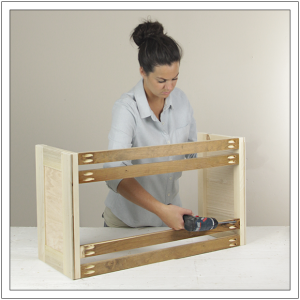
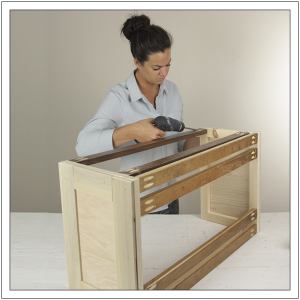
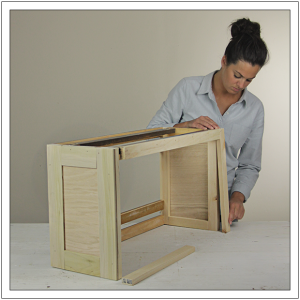
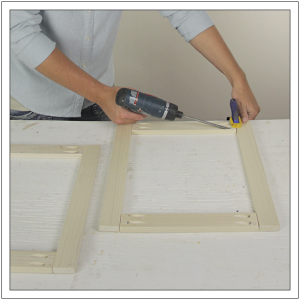
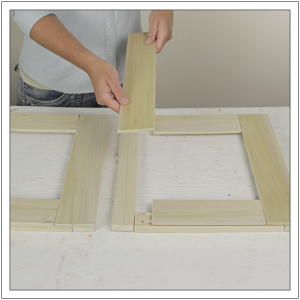
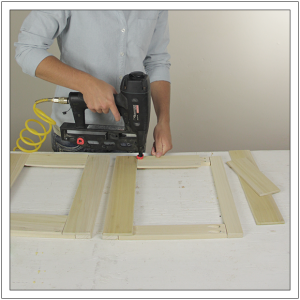
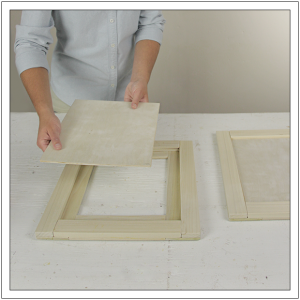
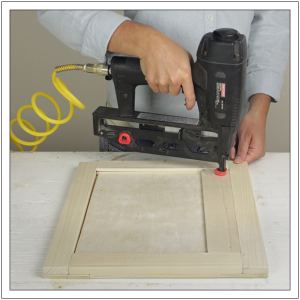
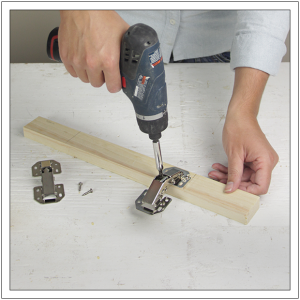
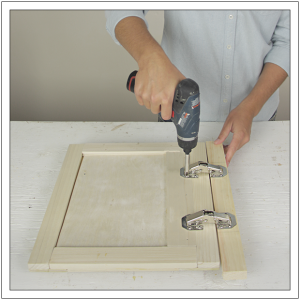
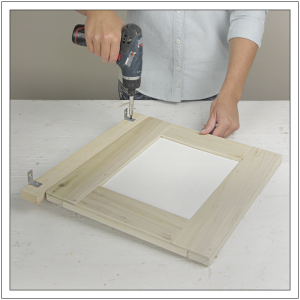
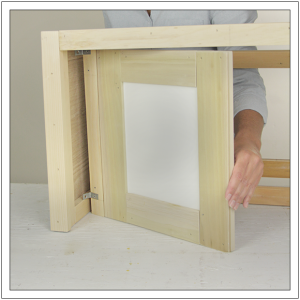
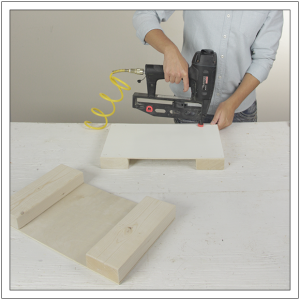
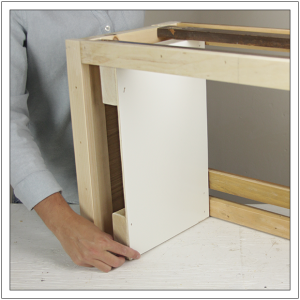
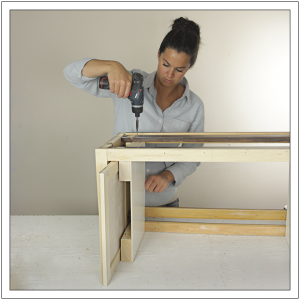
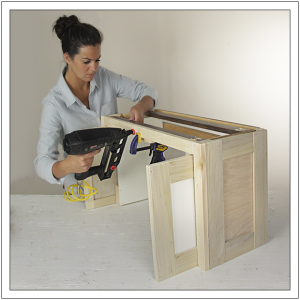





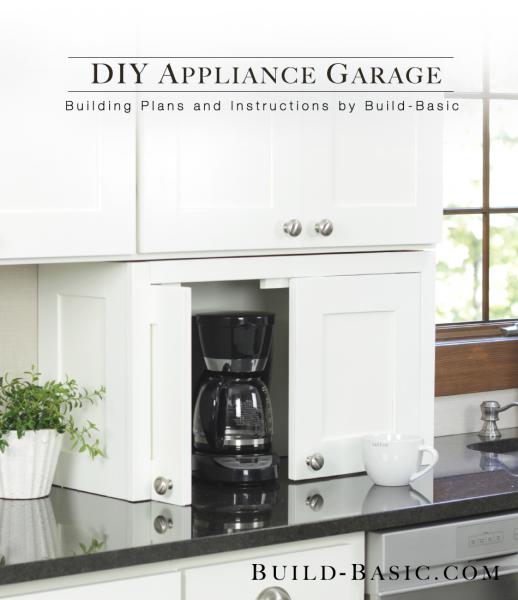
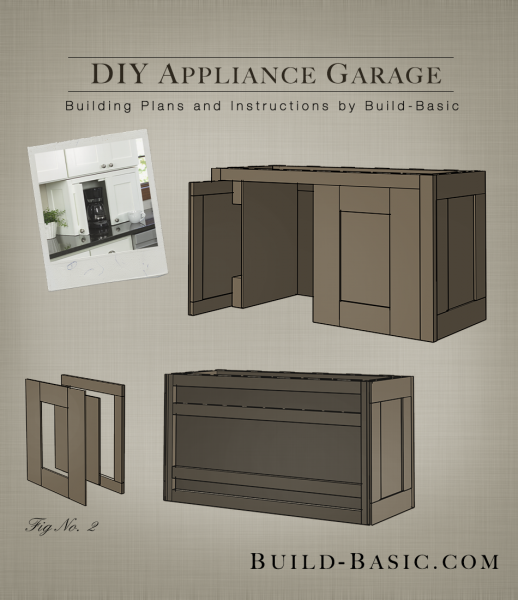


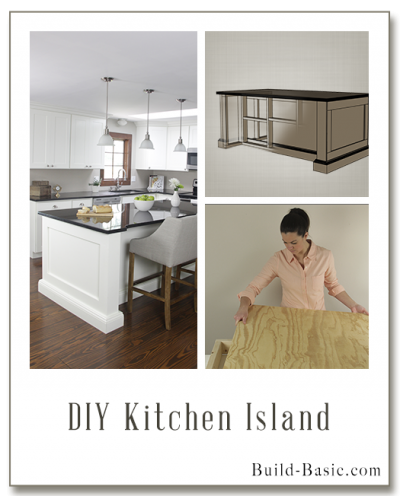
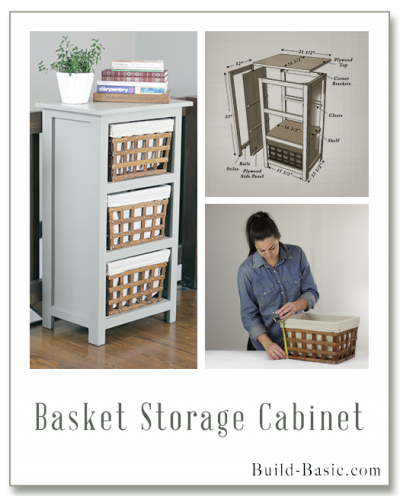
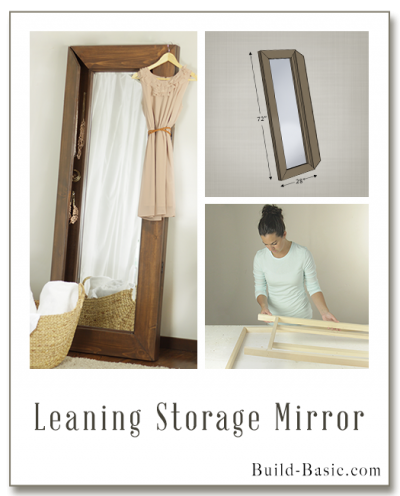
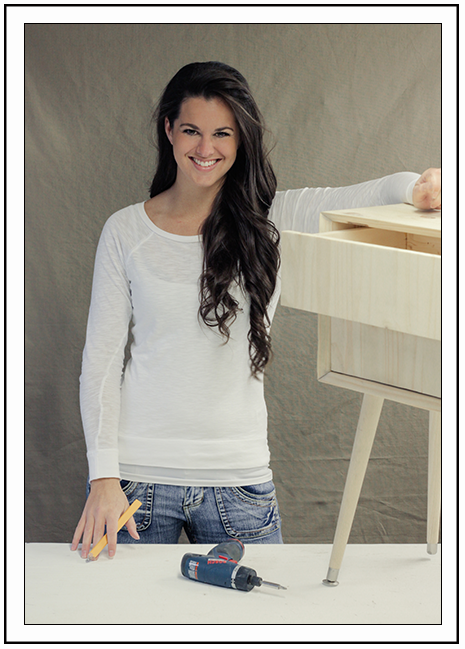





Marissa
Hi! The link to amazon for the sliding hardware seems to no longer work– is there a particular name for this type of hardware that I can search? Thank you so much!
Pingback: Clever Uses For That Space Under Kitchen Cabinets
Irene Trentham
That is indeed a great concept, Jenn. Painting it black with a semi-gloss finish would be great too as it would make the dirt less visible considering it’s the kitchen.
Definitely bookmarking this for future reference. Thank you for the very detailed guide!